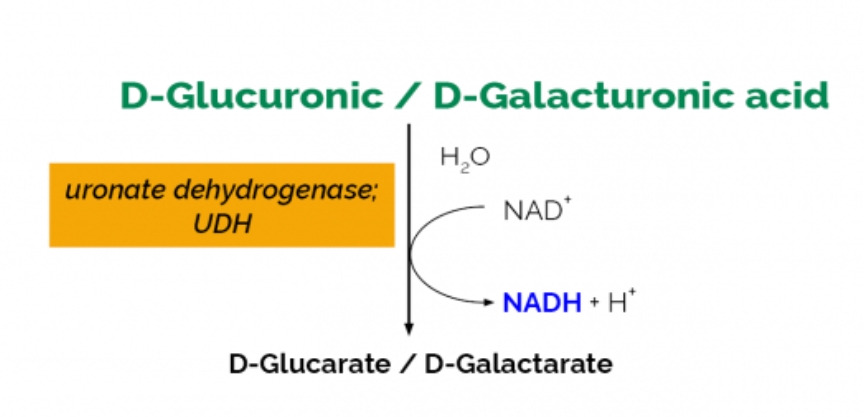- 背景資料
D-葡萄醣醛酸(D-glucuronic acid)和D-半乳醣醛酸(D-galacturonic acid)是自然存在的己醣醛酸(hexuronic acids)物質,在生物體中,常以下列幾種方式存在:
1️⃣醣胺聚醣(glycosaminoglucan,簡稱GAGs),例如:肝素(heparin)、硫酸軟骨素(chondroitin sulphate)、玻尿酸(hyaluronan),可能存在於哺乳類動物之結締組織(例如軟骨)當中
2️⃣哺乳類動物之葡萄糖苷酸結合物(glucuronide conjugates),肝臟葡萄醣醛酸化(Glucuronidation)是人體中重要的解毒路徑(phase II reaction),人體中的有毒物質(xenobiotic)藉由酵素(UDP-glucuronyltransferase)作用後,可與葡萄醣醛酸結合,之後藉由膽汁(bile)或尿液(urine)的方式排出體外
3️⃣植物細胞壁之多醣類(plant cell wall polysaccharides),D-葡萄醣醛酸可作為阿拉伯木聚醣支鏈的取代物,D-半乳醣醛酸則是果膠(pectin)的主要成分
- A. MANUAL ASSAY PROCEDURE:
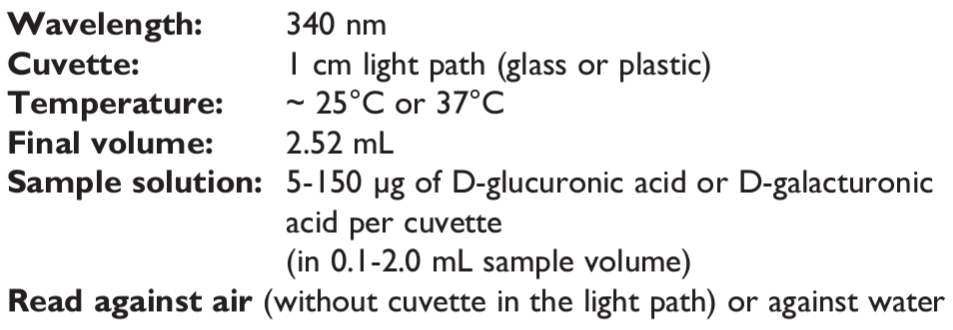
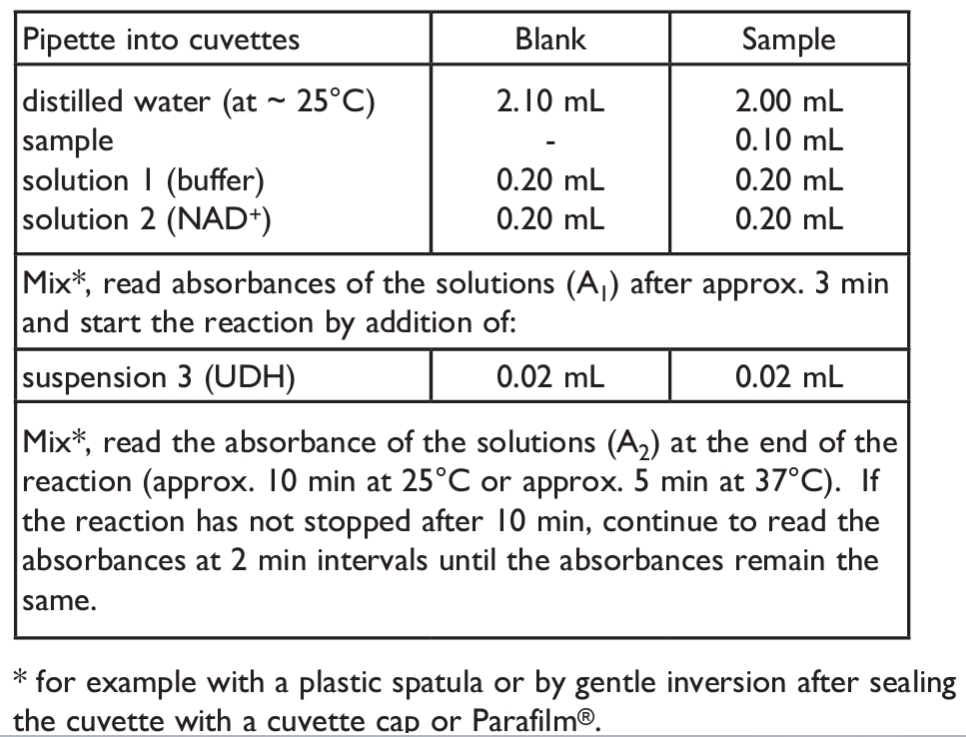
- B. AUTO-ANALYSER ASSAY PROCEDURE:
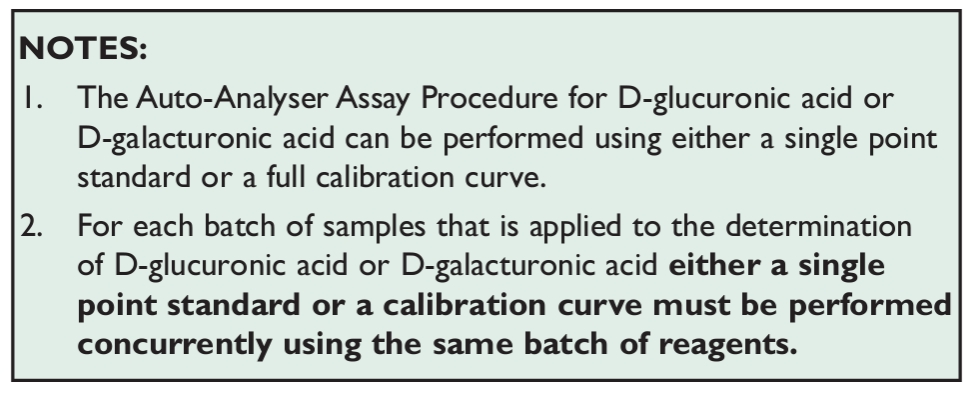
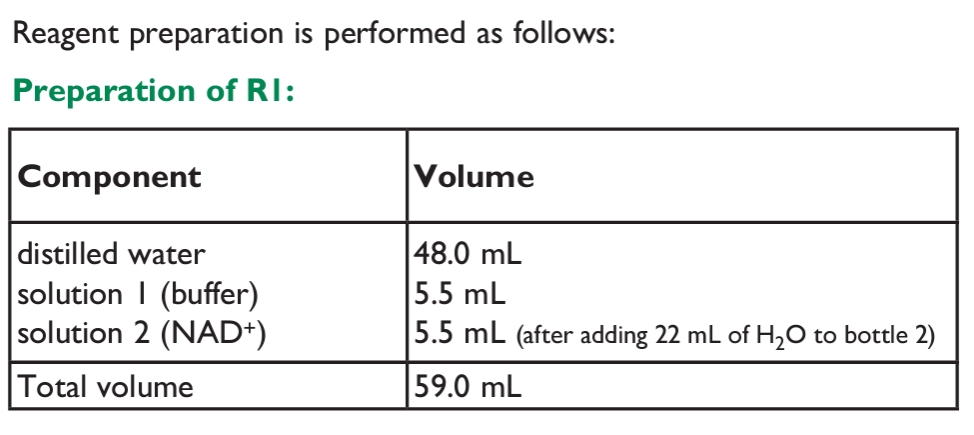

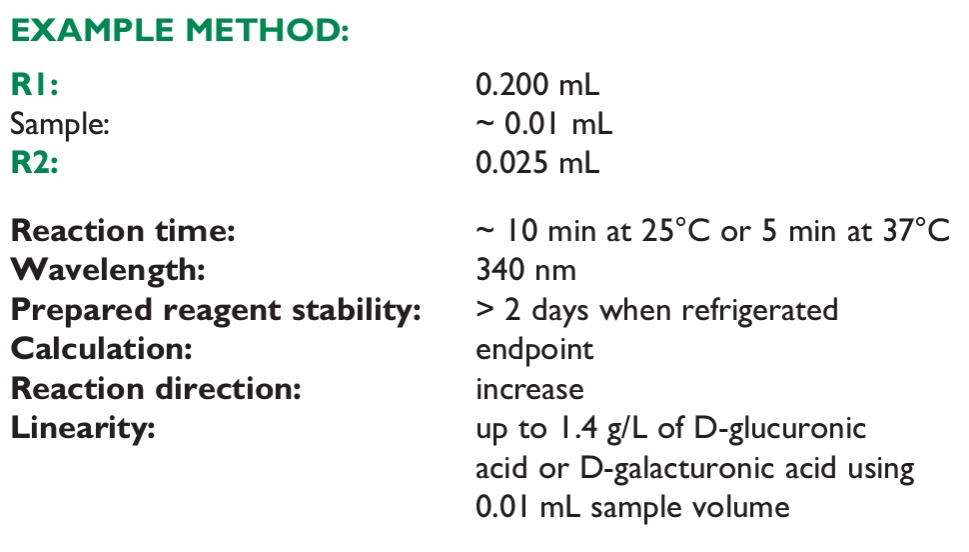
- C. MICROPLATE ASSAY PROCEDURE
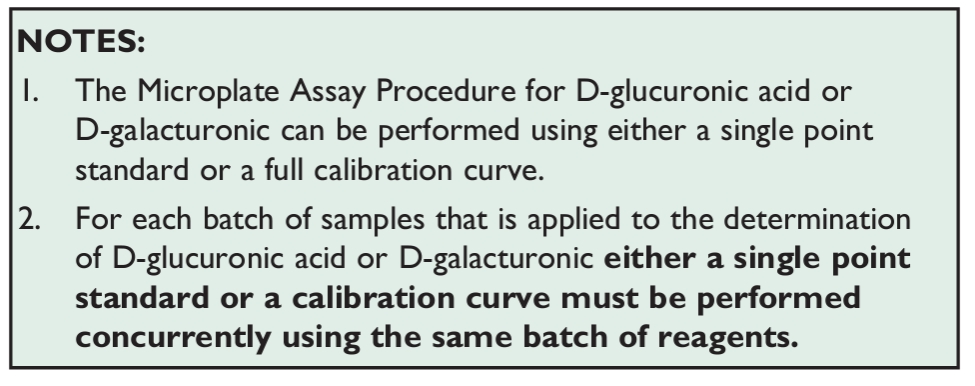

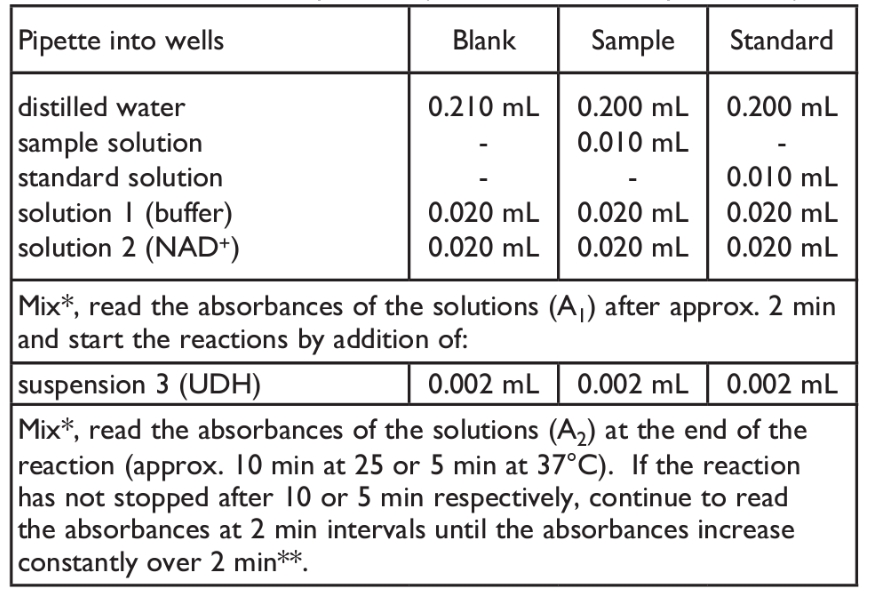

- SAMPLE PREPARATION:
1. Sample dilution.
The amount of D-hexuronic acid present in the cuvette (i.e. in the 0.1 mL of sample being analysed) should range between 5 and 150 μg. The sample solution must therefore be diluted sufficiently to yield a concentration between 0.05 and 1.5 g/L.
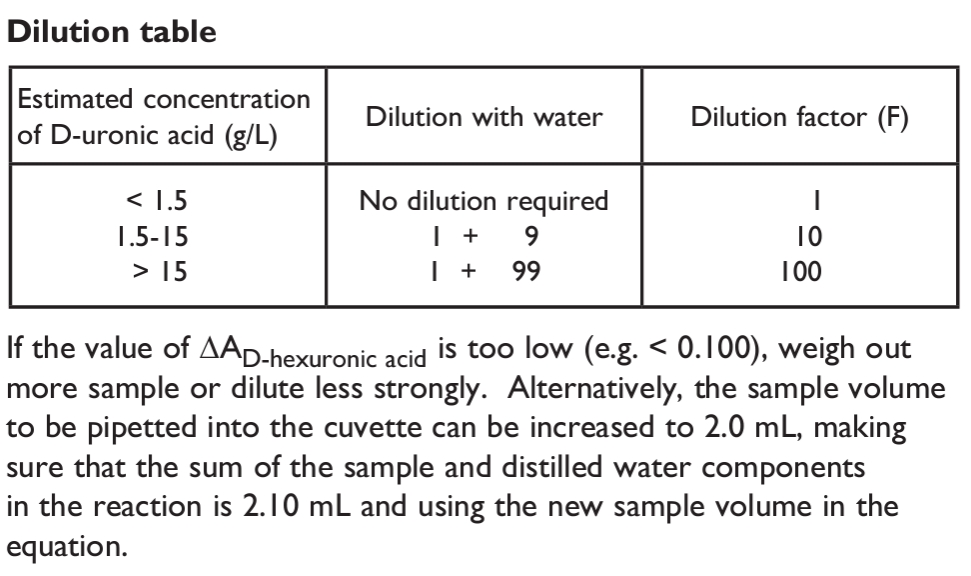
2. Sample clarification.
(a) Solutions:
Carrez I solution. Dissolve 3.60 g of potassium hexacyanoferrate (II) {K4[Fe(CN)6].3H2O} (Sigma cat. no. P9387) in 100 mL of distilled water. Store at room temperature.
Carrez II solution. Dissolve 7.20 g of zinc sulphate (ZnSO4.7H2O) (Sigma cat. no. Z4750) in 100 mL of distilled water. Store at room temperature.
Sodium hydroxide (NaOH, 100 mM). Dissolve 4 g of NaOH in 1 L of distilled water. Store at room temperature.
(b) Procedure:
Pipette the liquid sample into a 100 mL volumetric flask which contains approx. 60 mL of distilled water, or weigh sufficient quantity of the sample into a 100 mL volumetric flask and add 60 mL of distilled water. Carefully add 5 mL of Carrez I solution, 5 mL of Carrez II solution and 10 mL of NaOH solution (100 mM). Mix after each addition. Fill the volumetric flask to the mark, mix and filter.
3. General considerations.
(a) Liquid samples: clear, slightly coloured and approximately neutral, liquid samples can be used directly in the assay.
(b) Acidic samples: if > 0.1 mL of an acidic sample is to be used undiluted (such as red wine or coloured fruit juice), the pH of the solution should be increased to approx. 7.4 using 2 M NaOH, and the solution incubated at room temperature for 30 min.
(c) Carbon dioxide: samples containing carbon dioxide should be degassed by increasing the pH to approx. 7.4 with 2 M NaOH and gentle stirring, or by stirring with a glass rod.
(d) Strongly coloured samples: if used undiluted, strongly coloured samples should be treated by the addition of 0.2 g of polyvinylpolypyrollidone (PVPP)/10 mL of sample. Shake the tube vigorously for 5 min and then filter through Whatman No. 1 filter paper.
(e) Solid samples: homogenise or crush solid samples in distilled water and filter if necessary.
(f) Samples containing fat: extract such samples with hot water at a temperature above the melting point of the fat, e.g. in a 100 mL volumetric flask at 60°C. Adjust to room temperature and fill the volumetric flask to the mark with distilled water. Store on ice or in a refrigerator for 15-30 min and then filter. Discard the first few mL of filtrate, and use the clear supernatant (which may be slightly opalescent) for assay.
(g) Samples containing protein: deproteinise samples containing protein with Carrez reagents, alternatively use ice cold perchloric acid. Add an equal volume of ice-cold 1 M perchloric acid with mixing. Filter or centrifuge at 1,500 g for 10 min and adjust the pH of the supernatant to between 7 and 8 with 1 M KOH. Use the supernatant in the assay after appropriate dilution.
商品特色
商品規格
- 商品規格
100 assays (manual) / 1000 assays (microplate) / 1000 assays (auto-analyser)
Bottle 1:
Buffer (22 mL, pH 8) plus sodium azide (0.02% w/v) as a preservative.
Stable for > 2 years at 4°C.
Bottle 2:
NAD+ freeze dried powder.
Stable for > 5 years below -10°C.
Bottle 3:
Uronate dehydrogenase suspension (2.2 mL).
Stable for > 2 years at 4°C.
Bottle 4:
D-Glucuronic acid (5 mL; 0.5 mg/mL).
Stable for > 2 years; store sealed at 4°C.
